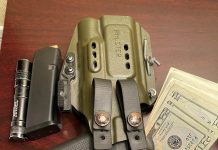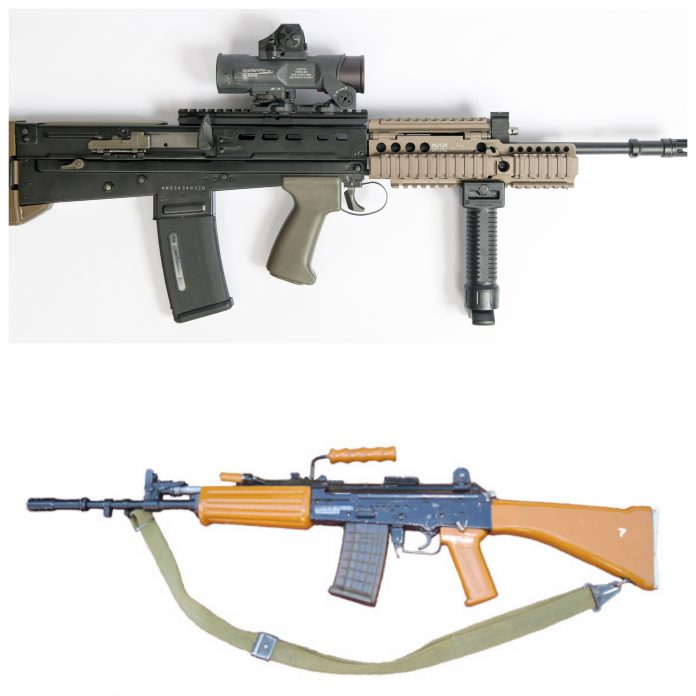
When you sit back and think about the worst weapons ever issued to a military force, you have plenty of options. The Chauchat was pretty terrible. The M14 might be America’s worst military rifle. There are just too many. However, let’s narrow it down to the more modern assault rifle market, and things get a little easier. When I narrowed it down to just two weapons, I couldn’t figure out if the British L85 or the Indian INSAS took the cake as best of the worst.
What’s somewhat funny is that the Brits and Indians were both wielding the FN FAL in the form of the L1A1 prior to adopting their respective god-awful weapons. The Brits adopted the L85 and SA80 family in 1985. The INSAS rifle was adopted a bit later, in 1998, officially. The adoption of the ISNAS was delayed because the Indians lacked enough 5.56 ammo to issue it.
Breaking Down the INSAS and L85
The L85 and INSAS were similar in their purpose. Both military forces wanted a domestically produced modern assault rifle. The age of the battle rifle was over, and the modern 5.56 rifle was and remained the current hotness. Both military forces wanted to get into the modern arms market and also wanted to domestically produce their new rifle. The INSAS and L85 are also parts of weapons’ families’ that include carbine and LMG variants.
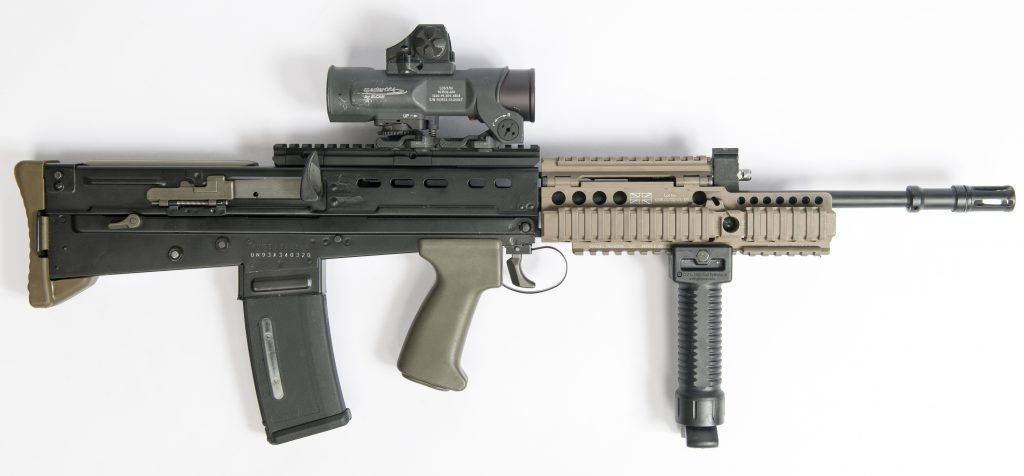
The Brits have had a thing for bullpups for basically ever. They really wanted one after World War 2, and it took until the 1980s to make their dreams come true. The L85 took a lot of inspiration from the AR-18 series rifle. It’s not exactly fair to say it’s a bullpup AR-18, but it’s close. (Side note, the Brits did experiment with a bullpup AR-18, and somehow it was worse than the L85. The L85 is a selective-fire assault rifle that chambers the 5.56 NATO cartridge and feeds from a box magazine.

The INSAS came to be at a time when the Indian Army and police forces were using mostly FALs but also British .303 rifles and AK series rifles. The Indians wanted a modern weapon to be universal for their armed forces. They designed something that took inspiration from the AK, the FAL, and even the HK rifles. It used a standard layout, fed from a box magazine, and offered variants with wood or polymer furniture as well as folding and fixed stocks.
What Makes Them So Bad?
Ooh boy, where to start? Both weapons have major reliability issues. The L85 sucked in dusty and artic environments and ran into tons of malfunctions. The polymer furniture reportedly melted from bug repellant. The internals were not robust enough for a military rifle. In the Gulf War, the weapon broke often, and the L85 proved more reliable in full auto than semi, and the L85A1 proved more reliable in semi than auto. The gas mechanism would pop open randomly.
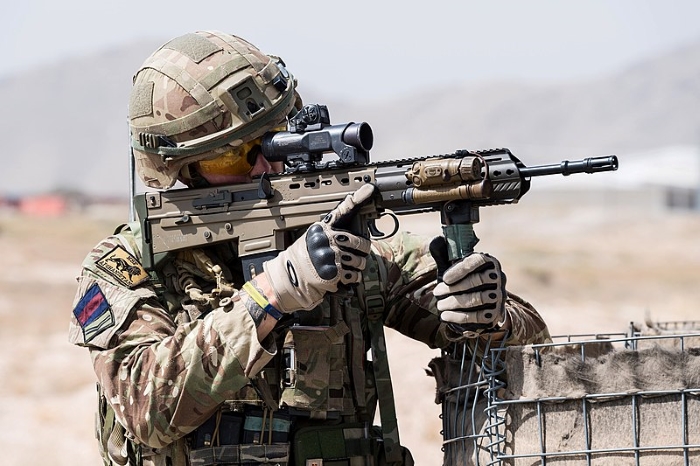
The INSAS problems began in 1999 in its first trial by combat. The rifle was being used for a conflict in the Himalayas, and the temperatures shut the rifle down. It had huge reliability issues. Sometimes, regardless of where the rifle’s selector was set, it would just fire in full auto mode. The gas regulator often broke, rendering the rifle useless.
The L85’s first batch of magazines was so bad you could allegedly deform them by grasping them tightly. The INSAS magazines were polymer and reportedly cracked often. Both guns featured furniture that was poorly made and wobbly, often easily broken.
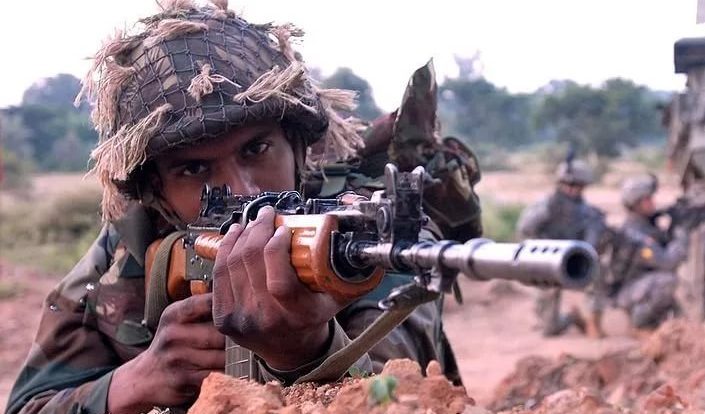
Both weapons reportedly overheated quickly. The L85, especially the squad auto version, would overheat in 120 to 150 rounds. The INSAS rifles were adopted by the Nepalese forces and seized up in a firefight against Maoist terrorists. The Nepalese were overrun, and this led to 43 deaths. While we don’t have specific examples, a LANDSET report by the Ministry of Defence stated that platoon commanders expected casualties caused by the weapon in CQB.
Which is Worse?
The Brits have attempted to fix the L85, and HK, then owned by British investors, upgraded the weapon. This became the L85A2. This seemed to largely fix the predecessor’s mistakes. The A2 variants are reportedly much better and much more reliable. The squad support version was pulled and replaced by the belt-fed FN Minimi. It’s worth noting that British special ops tend to prefer AR variants over the L85.
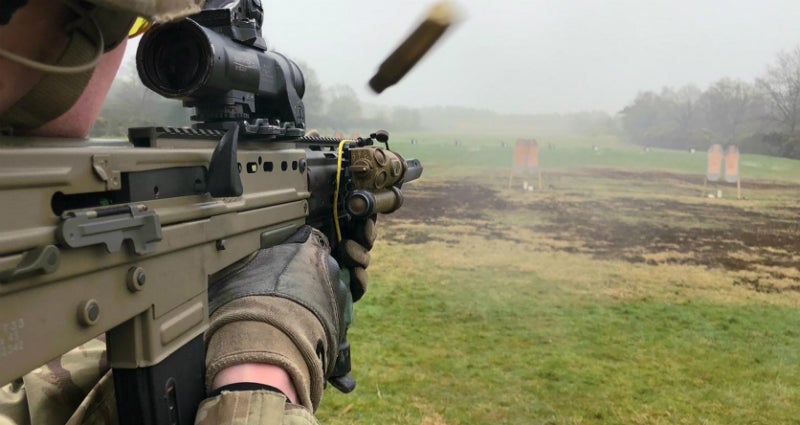
The Indians attempted to fix the INSAS problems but ultimately chose to do away with it. After several high-profile problems, it was found to be too much of a problem to fix. The Indian Army is instead resigning the weapon and purchasing the AK 203 rifles and some SIG 716i rifles alongside the Israeli Negev machine guns.
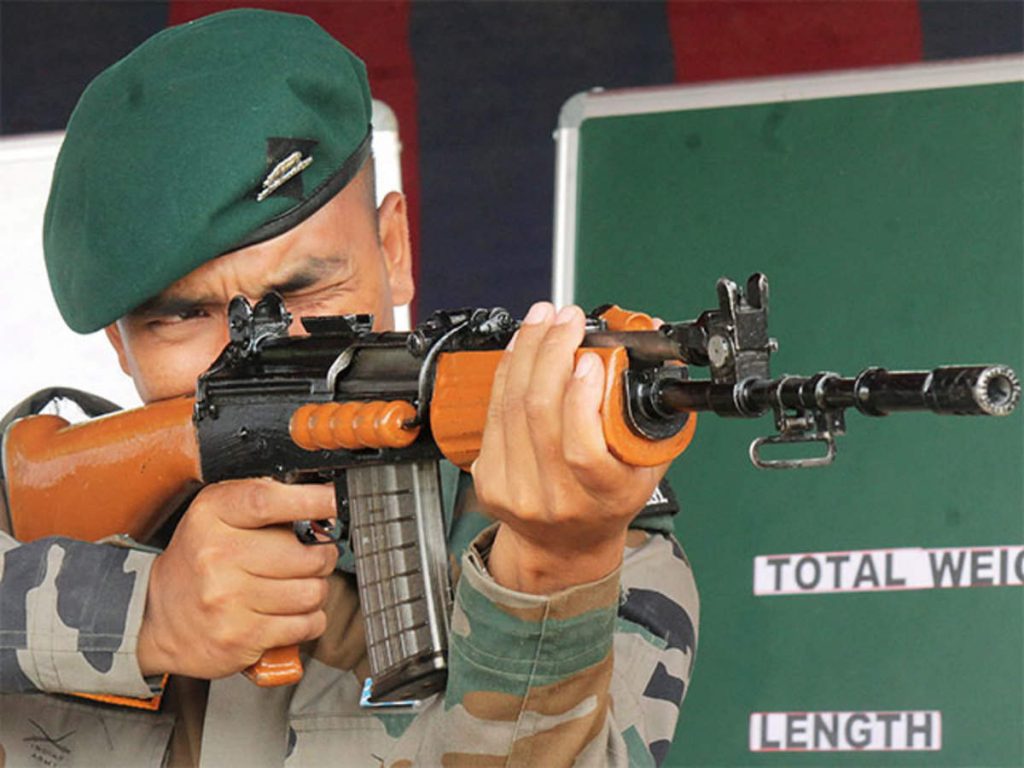
It would seem the INSAS was worse as it couldn’t even be fixed. However, at least the Indians corrected the problem fairly quickly rather than continue to issue a craptastic rifle. With that in mind, I’m giving the INSAS the best of the worst win.


